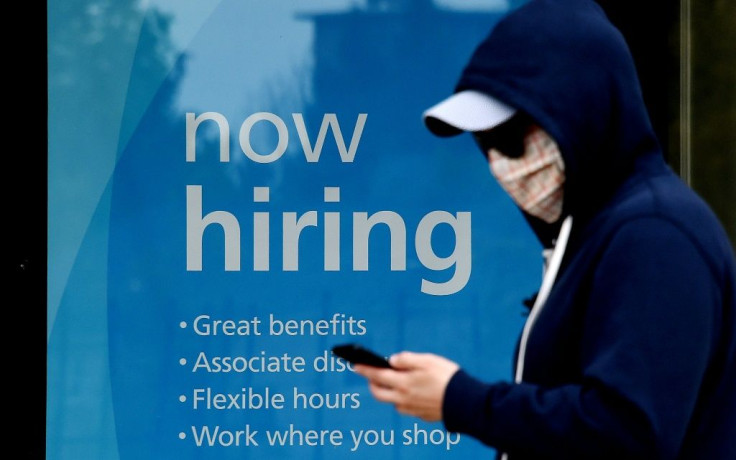Jobs Fall Far Short Of Expectations, Adding Only 210,000 In November As Omicron Fears Mount

The latest job numbers for November fell woefully below expectations with only 210,000 added, the Bureau of Labor Statistics (BLS) reported on Friday. Forecasts had projected that the U.S economy would add 550,000 jobs, but instead saw less than half of that amount.
This number has thrown sand in the gears of the job expansion that has been seen over the last month, when 531,000 jobs were recorded in October. Only two days earlier, a private estimate found 534,000 new hires last month.
The BLS nonfarm payroll report also included an update to the unemployment rate, showing that it dropped to 4.2% with overall participation up to 61.8%.
Broken down by sector, there were a few surprising findings in the BLS report. The leisure and hospitality sector, which for months has led the way on hiring, saw only 23,000 jobs added. Retail workers, who should be in higher demand as the holiday shopping season begins, were down by 20,000.
The arrival of the holiday season appears to have still played a positive part in the hirings that did occur in November. For example, the transportation and warehousing industries increased by 50,000, reflecting the importance these sector play during the holiday season.
Labor shortages have been a persistent pain across the U.S economy during its expansion, pushing prices higher for businesses in many sectors. Workers have increased their expectations for better benefits and compensation during the pandemic, and they have shown they are unafraid to quit, knowing they can take their labor elsewhere.
The disappointing jobs report also follows the arrival of the latest Omicron variant of COVID-19 in the U.S. Much remains to be known about the variant’s infectiousness or its lethality, but the federal government and many businesses fear it can undo a fragile economic recovery from last year’s devastation.
There was a bright spot on wage growth to take into account in the latest BLS Report. It found that wages had barely increased in November, but they are up by 4.8% compared to the same time last year.
Dan North, a senior economist at Euler Hermes North America, told International Business Times that the wage number would be “the most important number to look at” in the report.
“Wages last month rose at a [year on year] rate of 4.9% - a record high (outside of pandemic swings) in 14 years of record,” said North in an email prior to the release of the BLS data on Friday.
"We have not had wage inflation for decades due to globalization and exposure to countries with extraordinarily low wages. That is what has been holding wages down."
North noted that the new numbers were a step backward for the U.S economy, but added that the low headline numbers may mask a more nuanced picture of the current labor market. To make his point, North noted that a number of workers may not be counted in the establishment survey, including those who are self-employed, but instead fall under the household survey data. This then can obscure the actual number of Americans who may be in the workforce or joining it in a different way.
"One critical difference between the two surveys is that the household survey includes the self-employed, sole proprietorships and unpaid family workers. This could help explain the 'great resignation', said North. "People are resigning to start their own businesses, and as such they would show up in the household survey, but not the establishment survey."
This hypothesis, he suggests, is supported by the low amount of initial and continuing unemployment claims that have been filed in recent months. The latest unemployment insurance report found that the number of Americans who filed for unemployment was 222,000 along with 2,306,353 continuing claims. These recent numbers were an increase from the 50-year low record a week earlier, but they are among the lowest recorded in the post-pandemic era.
© Copyright IBTimes 2025. All rights reserved.




















